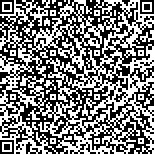| 引用本文: | 胡中吉,李艳玲,邓常清.力竭游泳联合大脑中动脉阻塞构建大鼠气虚血瘀型脑缺血再灌注模型的特征研究[J].中国现代应用药学,2025,42(4):31-38. |
| Hu Zhongji,Li Yanling,Deng Changqing.A study on the characteristics of cerebral ischemia-reperfusion model induced by exhaustive swimming combined with middle cerebral artery occlusion in rats with qi deficiency and blood Stasis[J].Chin J Mod Appl Pharm(中国现代应用药学),2025,42(4):31-38. |
|
| |
|
|
| 本文已被:浏览 33次 下载 18次 |

码上扫一扫! |
|
|
| 力竭游泳联合大脑中动脉阻塞构建大鼠气虚血瘀型脑缺血再灌注模型的特征研究 |
|
胡中吉, 李艳玲, 邓常清
|
|
湖南中医药大学
|
|
| 摘要: |
| 摘要:目的 基于中医“劳则气耗”理论,构建病证结合的气虚血瘀型脑缺血再灌注大鼠模型,分析其生物学特征。方法 将大鼠随机分为假手术组、大脑中动脉阻塞(middle cerebral artery occlusion,MCAO)造模组和复合造模组。MCAO组采用线栓法阻塞左侧大脑中动脉2小时再灌注48小时;复合造模组先连续力竭游泳21天,再同MCAO组进行缺血2小时再灌注48小时。Longa评分、气虚血瘀证量表评分评估模型的神经功能缺损和气虚血瘀证,2, 3, 5-氯化三苯基四氮唑 (TTC)染色法、苏木素-伊红(HE)染色和尼氏(Nissl)染色观察脑组织病理形态变化,免疫荧光IgG法检测血脑屏障通透性,比色法检测脑组织三磷酸腺苷(ATP)、Na+,K+-ATP酶、二磷酸腺苷(ADP)、丙二醛(MDA)、总超氧化物岐化酶(T-SOD),ELISA法检测血清IL-1β、IL-6水平。结果 与假手术组比较,MCAO组Longa评分和气虚血瘀证候评分显著增加(P<0.01),脑梗死率及脑水肿率增显著加(P<0.01),海马CA1区病理损伤加重(P<0.01),尼氏体数显著减少(P<0.01),血脑屏障IgG平均荧光强度显著增加(P<0.05和P<0.01);脑组织ATP、ADP含量、Na+,K+-ATP酶活性显著降低(P<0.05和P<0.01);血清MDA、IL-1β、IL-6显著增加(P<0.05和P<0.01),T-SOD显著降低(P<0.01);与MCAO组比较,复合造模组Longa评分和气虚血瘀证候评分显著增加(P<0.05和P<0.01),脑梗死率及脑水肿率显著增加(P<0.01)、血脑屏障IgG平均荧光强度显著增加(P<0.01);脑组织ATP、ADP含量、Na+,K+-ATP酶活性显著降低(P<0.05和P<0.01);血清MDA、IL-1β、IL-6显著增加(P<0.05和P<0.01),T-SOD显著降低(P<0.01)。结论 力竭游泳联合MCAO法可构建病证结合的气虚血瘀型脑缺血再灌注损伤大鼠模型,该法简单易行,兼具脑缺血和气虚血瘀的表征,相比单纯MCAO具有更重的神经功能缺损、气虚血瘀表征、组织损伤、脑组织能量代谢障碍及机体氧化应激和炎症反应。 |
| 关键词: 脑缺血 气虚血瘀型 模型 大鼠 生物学特征 |
| DOI: |
| 分类号: |
| 基金项目:国家自然科学基金区域创新发展联合基金重点项目(编号:U22A20377) |
|
| A study on the characteristics of cerebral ischemia-reperfusion model induced by exhaustive swimming combined with middle cerebral artery occlusion in rats with qi deficiency and blood Stasis |
|
Hu Zhongji, Li Yanling, Deng Changqing
|
|
Hunan University of Chinese Medicine
|
| Abstract: |
| ABSTRACT: OBJECTIVE Based on the theory of "labor leads to qi depletion" in traditional Chinese medicine, we constructed a rat model of qi deficiency and blood stasis cerebral ischemia/reperfusion and analyzed its biological characteristics. METHODS The rats were randomly divided into a sham operation group, a middle cerebral artery occlusion (MCAO) modeling group, and a composite modeling group, and the MCAO group was blocked by the wire embolus method for 2 hr and reperfused for 48 hr. The composite modeling group was subjected to a continuous exhaustive swimming for 21 days, and then ischemic reperfusion was carried out for 48 hr in the same group as that of the MCAO group. The neurological deficits of the model and the evidence of qi deficiency and blood stasis were assessed by the Longa score and the qi deficiency and blood stasis scale, and the pathomorphological changes of the brain tissue were observed by 2, 3, 5-triphenyltetrazolium chloride (TTC) staining, HE staining, and Niehl's staining, and the permeability of the blood-brain barrier was detected by immunofluorescent IgG, and the brain tissue was examined for ATP, Na+,K+-, ATPase, and ATPase diphosphate by colorimetric assay. ATPase, Na+,K+-ATPase, adenosine diphosphate (ADP), malondialdehyde (MDA), total superoxide dismutase (T-SOD), and serum IL-1β and IL-6 levels by ELISA. RESULTS Compared with the sham group, the Longa score and Qi deficiency and blood stasis syndrome score were significantly increased in the MCAO group (P < 0.01), the cerebral infarction rate and cerebral edema rate increased significantly (P < 0.01), the pathological damage in the CA1 area of the hippocampus was aggravated (P < 0.01), the number of Nyctaloid bodies was significantly reduced (P < 0.01), and the average fluorescent intensity of IgG at the blood-brain barrier was significantly increased (P < 0.05 and P < 0.01 ); the ATP of brain tissue and ADP content, Na+,K+-ATPase activity were significantly decreased (P < 0.05 and P < 0.01); serum MDA, IL-1β, and IL-6 were significantly increased (P < 0.05 and P < 0.01), and T-SOD was significantly decreased (P < 0.01); compared with the MCAO group, the composite modeling group had a significant increase in Longa scores and qi deficiency and blood stasis symptom scores (P<0.05 and P<0.01), cerebral infarction rate and cerebral edema rate were significantly increased (P<0.01), and the average fluorescence intensity of blood-brain barrier IgG was significantly increased (P<0.01); brain tissue ATP, ADP content, and Na+,K+-ATPase activity were significantly decreased (P<0.05 and P<0.01); serum MDA, IL-1β, and IL-6 were significantly increased (P<0.05 and P<0.01); and serum MDA, IL-1β, and IL-6 were significantly increased (P<0.05 and P<0.01). 0.05 and P < 0.01), and T-SOD was significantly decreased (P < 0.01). CONCLUSION Forceful swimming combined with MCAO method can construct a rat model of cerebral ischemia/reperfusion injury of qi deficiency and blood stasis type with combination of disease and evidence, which is simple and easy to implement, with both cerebral ischemia and qi deficiency and blood stasis phenotypes, and has heavier neurological deficits, qi deficiency and blood stasis phenotypes, tissue injuries, impaired energy metabolism of brain tissues, and oxidative stress and inflammatory response of organisms, as compared with MCAO alone. |
| Key words: cerebral ischemia qi deficiency and blood stasis type model rat biological characteristics |
|
|
|
|
